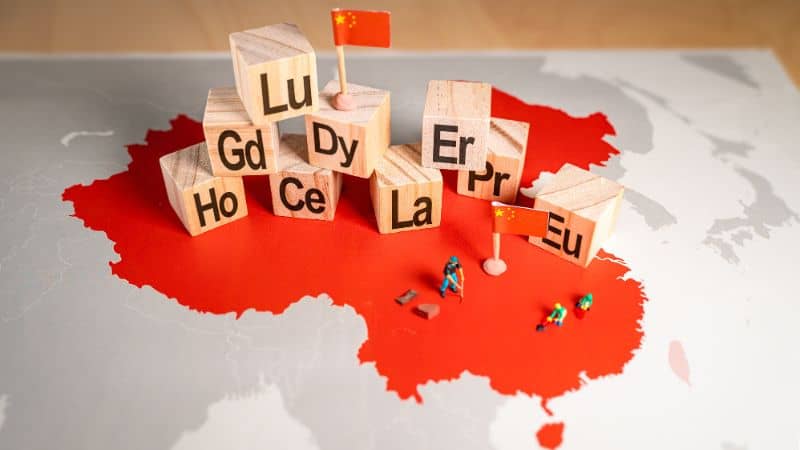On Monday, US President Donald Trump declared that if China guarantees the US supply of rare earth magnets, he would continue to permit Chinese students to study in the US, linking education to trade and export control. However, should China refuse, the China-US exports will be subject to 200 percent tariffs.

Trump’s Harsh Statement on Rare-Earth Export Control & Tariff
Trump told reporters, “They have to give us magnets,” and threatened that “we have to charge them 200 per cent tariff or something,” while meeting South Korean President Lee Jae Myung at the White House, emphasizing the importance of rare earth exports.
However, President Trump also emphasized the broader context of trade negotiations, stating, “We have a much more powerful thing, that’s tariffs. If we want to put 100 percent, 200 percent tariffs on, we wouldn’t do any business with China.” He added, “And you know, it would be OK too, if we had to. But the magnet situation, we have tremendous power over them, and they have some power over us.” In a particularly stark remark, he claimed, “We have incredible cards, but I don’t want to play those cards. If I played those cards, that would destroy China,” though he offered no specific details on what those measures might entail.
His latest remarks mark a contrast with his previous amicable take on the ties with China, as he had extended a pause on new tariff increases against China earlier this month for another 90 days. This extension, reported to last until November 10th, is intended to provide negotiators additional time to address persistent trade disputes over trade friction, including rare earth mineral exports. Despite this temporary de-escalation, Trump’s rhetoric underscores a volatile and coercive strategy.
Why Are China-US Exports of Rare Earth Magnets Important For US
The urgency behind Trump’s demand for rare earth magnets stems from China’s dominant position in the global supply chain and a possible rare earth shortage in the US, as these materials are indispensable for modern technology.
In April 2025, China retaliated against earlier U.S. tariff hikes by placing several rare earth items and magnets on its export restriction list, and outright banning some of them by imposing an export licenses system. This tremendously shocked the American defense and technology sectors, and highlighted a critical vulnerability: the U.S. lacks domestic processing capabilities for heavy rare earth elements, with nearly zero separation capacity, making it heavily reliant on Chinese exports.
Surge After Temporary Truce
A temporary resolution was reached in June 2025, when a rare earth agreement was signed, leading to a significant surge in U.S.-bound exports. Chinese customs data showed that shipments of rare earth permanent magnets to the U.S. soared to 619 tons in July, a 75.5% increase from June and a 4.8% rise year-on-year. This reprieve, however, seems to have been short-lived. Trump’s latest threats suggest that the U.S. is still dissatisfied with the terms or volume of supply, and is willing to escalate tensions despite the existing truce.
Interestingly, Trump coupled his tariff threat with a promise to allow up to 600,000 Chinese students into the United States. This statements appears contradictory to the stricter immigration policies advocated by members of his administration, such as Secretary of State Marco Rubio. In May, Rubio had emphasized plans to aggressively revoke visas for Chinese students with ties to the military or those studying sensitive technologies. He also called for enhanced scrutiny for future applicants from China and Hong Kong. This juxtaposition of threats and incentives no doubt points towards transactional diplomacy, and in this case, educational access is bargained against trade compromise.
What’s Next for the Trade War
Trump’s escalation reflects a precarious balancing act. While leveraging U.S. economic power, he acknowledges the mutual destructiveness of an all-out trade war. For now, the extended tariff pause offers a window for dialogue, but the underlying tensions remain fraught, for both the Trump administration and Beijing have made it abundantly clear that they will not back down from their demands in economy and geopolitics. The future remains unclear, and the global economy watches nervously as these two giants wrestle over trade disputes.
